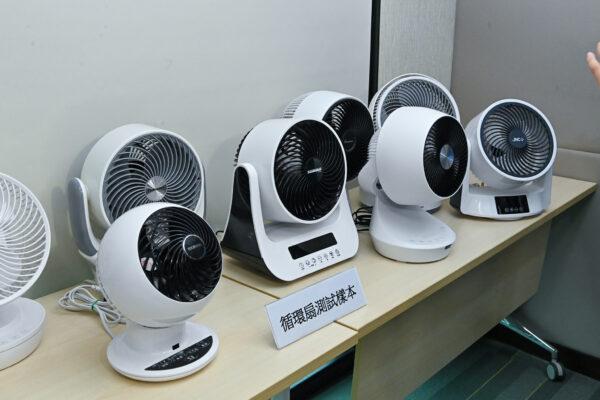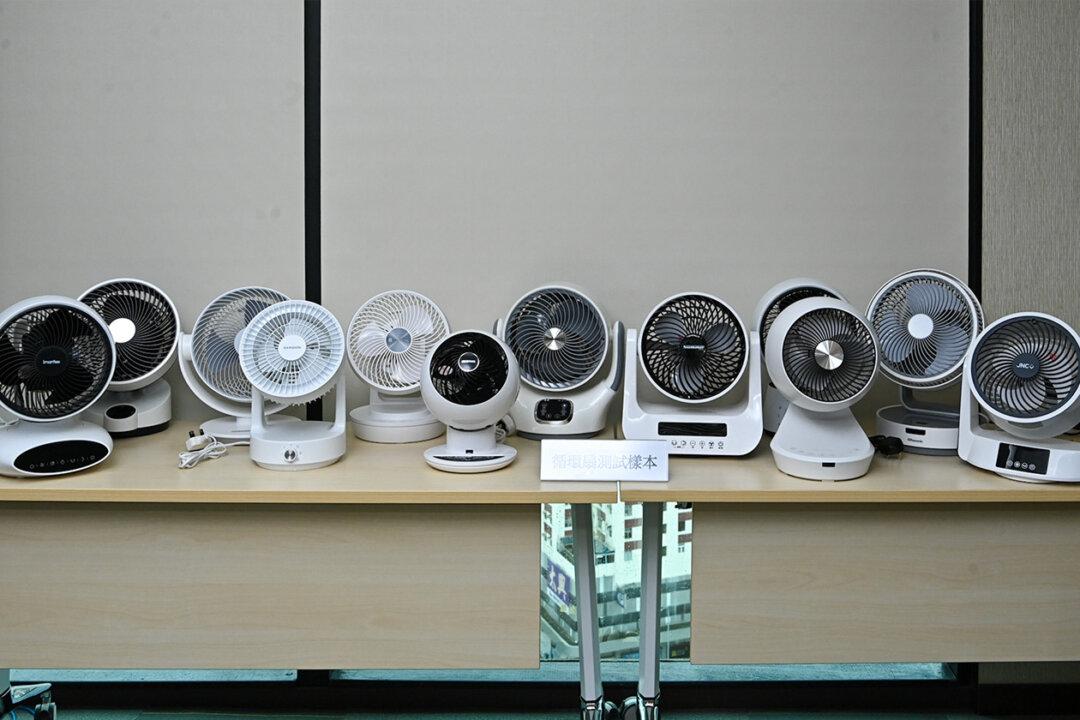The Hong Kong Consumer Council tested 12 air circulator fans, with a full score of 5 points. Four samples received a rating of 4.5 points, while the other eight failed some safety test items, including two whose component flame retardancy did not meet standards. The Electrical and Mechanical Services Department (EMSD) announced yesterday that suppliers have decided to arrange product recalls to replace parts. The test also found that the air volume between different fans can vary by more than 50 percent, and energy efficiency can vary by up to 67 percent.

Four samples received a rating of 4.5 points in the Consumer Council's 12 air circulator fans test. Sung Pi-Lung/The Epoch Times




